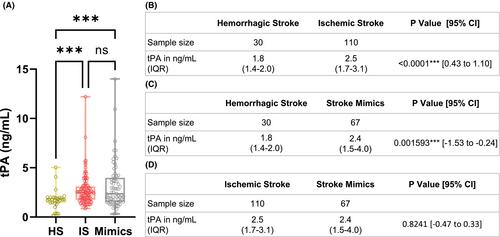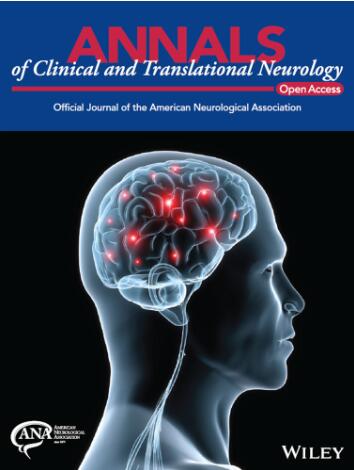Endogenous tPA levels: A biomarker for discriminating hemorrhagic stroke from ischemic stroke and stroke mimics
Abstract
Objective
Stroke is the leading cause of death and disability. Timely differentiation between ischemic stroke, hemorrhagic stroke, and stroke mimics is critical for tailored treatment and triage. To accelerate the identification of stroke's subtype, we propose to use the levels of circulating tPA as a biomarker.
Methods
Biostroke is an observational study performed at the Caen Hospital. We quantified tPA levels in 110 patients with ischemic strokes, 30 patients with hemorrhagic strokes, and 67 stroke mimic patients upon their arrival at the emergency. Two logistic regression models were formulated: one with parameters measurable in an ambulance (Model A) and one with parameters measurable at the hospital (Model H). These models were both tested with or without plasma tPA measurements. Our initial assessment involved evaluating the effectiveness of both models in distinguishing between hemorrhagic strokes, ischemic strokes, and stroke mimics within our study cohort.
Results
Plasmatic tPA levels exhibit significant distinctions between hemorrhagic, ischemic, and mimic stroke patients (1.8; 2.5; 2.4 ng/mL, respectively). The inclusion of tPA in model A significantly enhances the classification accuracy of hemorrhagic patients only, increasing identification from 0.67 (95% CI, 0.59 to 0.75) to 0.78 (95% CI, 0.7 to 0.85) (p = 0.0098). Similarly, in model H, classification accuracy of hemorrhagic patients significantly increased with the addition of tPA, rising from 0.75 (95% CI, 0.67 to 0.83) without tPA to 0.86 (95% CI, 0.81 to 0.91) with tPA (p = 0.024).
Interpretations
Our findings underscore the valuable role of tPA levels in distinguishing between stroke subtypes.


 求助内容:
求助内容: 应助结果提醒方式:
应助结果提醒方式:


